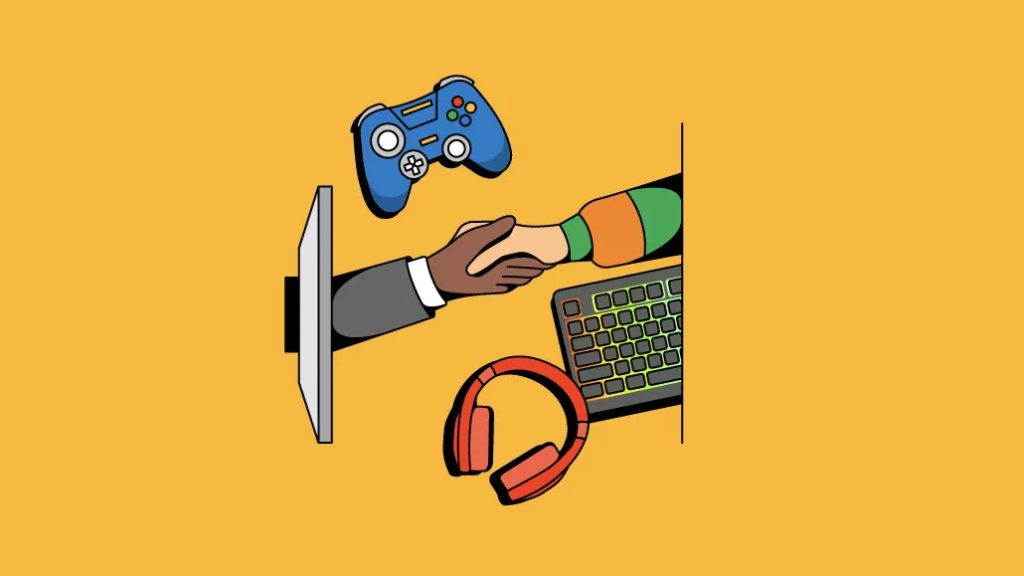Monetizing a game is an important step for every game creator. It’s not enough to merely create an interesting experience; you also need to convert it into a lucrative business. that’s why monetization is one of the vital elements in-game development
In this article, we will look at many ways to monetize your game, emphasizing in-app purchases, adverts, and other profitable techniques.
The Business of Gaming

The gaming industry is a thriving enterprise. With millions of games accessible across several platforms, sticking out demands not just outstanding gameplay but also clever revenue tactics.
Understanding the commercial side of gaming will help you grow income and assure the longevity of your game development efforts.
In-App Purchases (IAP) Monetization
In-app purchases (IAP) are one of the most used monetization tactics. They provide gamers more material or bonuses in return for real money. Here’s how you can use IAP effectively:
- Offer Valuable Content: Players are more likely to spend money if they see value in the content you offer. This could be in the form of new levels, characters, or cosmetic items.
- Use a Tiered Pricing Model: Provide options at different price points. This caters to a wider audience, from those willing to spend a little to those ready to invest more.
- Create Limited-Time Offers: Scarcity can drive sales. Limited-time offers or exclusive items can create a sense of urgency.
- Balance Free and Paid Content: Ensure that your game is enjoyable without spending money, but offer compelling reasons to make purchases.
Advertising Monetization

Ads are another important revenue stream in the gaming monetization business. They may be done in a number of ways without compromising the player experience:
- Banner Ads: These are simple and don’t interfere much with gameplay. Place them in non-intrusive areas like menus or loading screens.
- Interstitial Ads: These are full-screen ads that appear at natural breaks in the game, such as between levels. They can be more effective but should be used sparingly to avoid annoying players.
- Rewarded Ads: Players watch an ad in exchange for in-game rewards. This method can enhance user experience by providing value in return for their time.
- Native Ads: These ads blend seamlessly with the game content. They are less intrusive and can be more appealing to players.
Subscriptions Based Monetization

Subscriptions are getting more common in the game industry. They provide a consistent source of revenue and can increase player loyalty:
- Regular Content Updates: Offer subscribers exclusive content or early access to new features. Regular updates keep players engaged and justify the subscription fee.
- Ad-Free Experience: Many players are willing to pay for an ad-free experience. This can be a compelling reason to subscribe.
- Special Perks: Provide subscribers with unique in-game items, bonuses, or boosts. These perks can make the subscription more attractive.
One-Time Purchases Monetization
While the gaming industry has transitioned toward continuous income streams, one-time transactions remain viable. Offering your game for a single fee may entice users who want to pay once rather than deal with advertisements or IAPs.
- Premium Games: Some players prefer a premium experience without interruptions. Offer a one-time purchase option for a complete game.
- Expansion Packs: Sell additional content or expansions as one-time purchases. This approach works well for games with a strong narrative or extensive content.
Crowdfunding
Crowdfunding platforms such as Kickstarter and Indiegogo may be wonderful methods to fund your game development while also creating a community around your project.
- Engage with Backers: Keep your backers informed and involved in the development process. Regular updates and communication build trust and excitement.
- Offer Exclusive Rewards: Provide unique rewards for backers, such as early access, special editions, or personalized content.
- Set Realistic Goals: Be clear about what you need and what backers will receive. Transparency and honesty can lead to a successful campaign.
Merchandise
Merchandising may be a profitable extension of your game’s brand. It not only increases money but also advertises your game.
- Sell Branded Products: Offer products like T-shirts, posters, or figurines. Fans love to show off their favorite games.
- Partner with Manufacturers: Collaborate with companies that specialize in gaming merchandise to ensure high-quality products.
- Promote Through Your Game: Use your game to advertise your merchandise. In-game links to your store can drive sales.
Conclusion
Monetizing your game efficiently necessitates a combination of tactics specific to your target demographic and game genre. In-app purchases, advertisements, subscriptions, one-time purchases, crowdsourcing, and products all provide distinct perks.
Understanding the business aspect of gaming and adopting these tactics can help you transform your game into a lucrative operation. Keep the player’s experience in mind and strike the appropriate balance between revenue and enjoyment. This technique will assist you in establishing a profitable and long-term gaming business.
